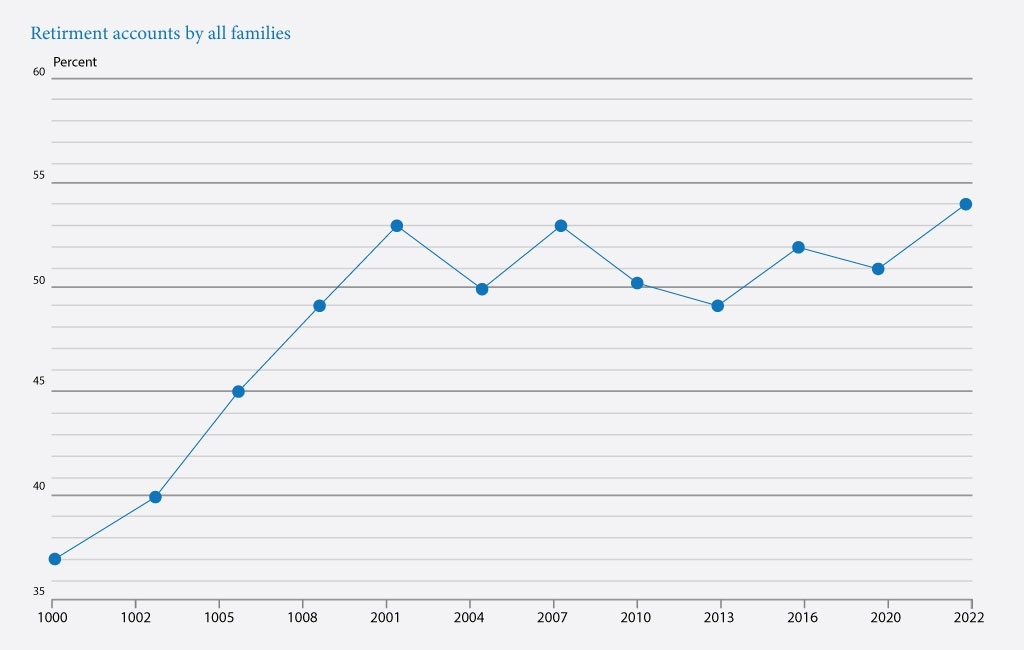Retirement Savings Calculator
Results
Retirement is an exciting chapter in life, but it comes with its share of uncertainties, especially when it comes to financial security. One of the most pressing questions retirees and those approaching retirement often ask is, “How long will my retirement savings last?” Ensuring your nest egg lasts throughout your retirement years is crucial for maintaining your desired lifestyle and peace of mind.
In this blog, we will explore various factors that influence the longevity of your retirement savings, from your spending habits and investment strategies to life expectancy and unforeseen expenses. By understanding these elements and planning accordingly, you can create a sustainable financial plan to help you enjoy your retirement without worrying about outliving your savings.
What is the Retirement Savings Plan?
A retirement savings plan is a financial strategy designed to accumulate funds for when you retire. The goal is to ensure you have enough money to cover your living expenses, healthcare, and other needs. This plan can include various savings accounts, investment portfolios, and retirement accounts like 401(k)s and IRAs.
A retirement savings plan is a financial strategy designed to help you save money for your future, typically after you stop working. It allows you to set aside a portion of your salary on a tax-advantaged basis, meaning you can either defer taxes until retirement or pay taxes upfront and withdraw funds tax-free later.

One key feature of a retirement savings plan is the ability to save automatically through payroll deductions. This makes it easy to consistently contribute a portion of your income to your retirement fund without remembering to do it manually. The amount you contribute is known as a salary deferral since it is deferred from your current pay and will be used in the future.
Two main ways to contribute to a retirement savings plan are pre-tax and Roth after-tax. Pretax contributions reduce your taxable income now, which can increase your take-home pay. These contributions and any earnings are taxed when you withdraw them in retirement. Roth after-tax contributions, on the other hand, are taxed upfront. If you meet IRS requirements, you can withdraw these contributions and their earnings tax-free during retirement.
The IRS sets annual limits on how much you can contribute to your retirement savings plan. For instance, in 2023, you can contribute up to $22,500 of your taxable salary, with additional catch-up contributions allowed if you are age 50 or older. Your employer may also make matching or other contributions to your account, significantly boosting your retirement savings.
If you choose the right investments, retirement savings will be maximum. Most plans offer a variety of investment options ranging from conservative to aggressive growth funds. Some plans also provide socially responsible funds and target-date funds that automatically adjust their investment mix as you approach your retirement date. These options allow you to tailor your investment strategy to your risk tolerance and retirement goals.
How Long will My Retirement Savings Last? Planning for Long-Lasting Retirement Savings
When planning for long-lasting retirement savings, it’s crucial to consider your timeline. Starting early can have significant benefits due to the power of compounding interest. Compounding allows your money to grow exponentially over time, meaning the sooner you start investing, the better off you’ll be. Even small monthly contributions can grow substantially over decades.
Think about the age you plan to retire and estimate your life expectancy. This will help you determine how many years your savings need to support you. Longer life expectancies require more substantial savings to ensure financial stability throughout retirement.
You might not have much to invest in your early career (ages 21–35), but time is on your side. By setting aside even a modest amount each month, you take advantage of compounding. For example, investing $50 a month starting at age 25 can grow significantly more than starting the same amount at age 45. The key is to start early and be consistent.
As you move into early midlife (ages 36–50), financial responsibilities like mortgages and loans might increase, but it’s vital to continue saving for retirement. During this stage, you likely have a higher income, allowing you to save more aggressively. Maximize any employer 401(k) matching programs and consider contributing to both a 401(k) and a Roth IRA to boost your savings.
Later midlife (ages 50–65) is a critical time to shift your investment strategy to more conservative options. With retirement approaching, safeguarding your savings becomes essential. Utilize catch-up contributions to your IRA and 401(k) to enhance your retirement fund. Additionally, this is a good time to evaluate other investment options like CDs, blue-chip stocks, and real estate to diversify your portfolio.
How Your Investments can Maximize Your Retirement Savings
Your investment strategy plays a significant role in maximizing your retirement savings. Diversifying your portfolio with a mix of stocks, bonds, and other assets can provide growth while managing risk.

Regularly reviewing and adjusting your investments ensures they align with your retirement goals and market conditions, helping to prolong the life of your savings.
Take Responsibility for Your Retirement
Taking charge of your retirement savings is essential in today’s financial landscape. Unlike past generations who often relied on pensions, modern workers must actively manage their retirement funds.
This means setting goals, tracking investments, and ensuring your savings can be converted into a steady income when you retire. Being proactive and informed can make a significant difference in your retirement outcomes.
Start to Protect Your Income by Using a Diversified Retirement Plan
Diversification is key to protecting your retirement income. Spreading your investments across various asset types helps mitigate market risks. This strategy should also extend to your income sources in retirement.
Combining different income streams, such as Social Security, personal savings and investments, can provide a more stable financial foundation and cushion against unexpected expenses.
Create Lifetime Income with the Potential to Grow
Annuities are becoming a popular choice for creating lifetime income. With the decline of traditional pensions and the limited coverage from Social Security, annuities offer a way to secure guaranteed income.
By including both fixed and variable annuities in your retirement plan, you can ensure a reliable income while also allowing for potential growth and providing financial security throughout your retirement years.
Save Enough to Get the Match
Employer matching contributions are an easy way to boost your retirement savings. If your employer offers to match your contributions to a workplace plan, aim to save at least enough to get the full match.
This is essentially free money that can significantly enhance your retirement fund. Even missing the match by a small margin can mean losing out on substantial savings over time.
See What a Difference a Few Dollars can Make
Every dollar you save can make a difference. Increasing your contributions, even by a small amount, can reduce your taxable income and grow your retirement savings. For instance, contributing an additional $100 a week from a $50,000 annual salary can lower your taxable income and boost your retirement fund. Starting early and maximizing all available saving opportunities is crucial to securing a comfortable retirement.
Consider the Role of Guaranteed Income
How long will my retirement savings last?Guaranteed income sources, such as Social Security and annuities, provide a steady stream of income during retirement. These sources can supplement your savings and reduce the risk of outliving your funds. Guaranteed retirement income planning offers peace of mind and financial security.

Covering Retirement Risks
Guaranteed income sources, such as Social Security, pensions, and annuities, provide a steady “paycheck” during retirement. This reliable income can cover essential living expenses and fund other desires, like traveling or home renovations.
A survey by Athene and Kiplinger’s Personal Finance found that 75% of Americans aged 50 and older want more guaranteed income for retirement. With a dependable income stream, retirees feel less stressed about outliving their savings, inflation, market volatility, and healthcare costs.
Combating Income Gaps
Relying solely on Social Security can be risky, especially with potential future benefit reductions. Even with personal savings and employer-sponsored plans, retirees may still face income gaps that limit their lifestyle choices.
Including guaranteed income sources in your retirement strategy ensures you have funds you can depend on, regardless of market fluctuations or changes in the cost of living. This financial stability can help you maintain your desired standard of living.
Creating Freedom
Pre-retirees today often expect to retire later than previous generations due to economic uncertainties and concerns about Social Security and Medicare. By incorporating guaranteed income into your retirement plan, you can bridge any savings gaps and make working in retirement a choice rather than a necessity.
A steady income flow offers confidence in your financial future, enabling you to seize opportunities and enjoy a fulfilling retirement.
Boosting the Confidence
Life’s unpredictability makes having a diversified retirement plan essential. According to the Athene-Kiplinger poll, pre-retirees with annuities feel more confident about their financial future.
Seventy-four percent believe they will have enough income to live comfortably, and 68% are confident they won’t outlive their savings. Retirees with annuity income report higher life satisfaction, as they can afford essentials and indulge in their desires, leading to a more enjoyable retirement.
Common Mistakes to Avoid
While answering the question: how long will my retirement savings last, planning for retirement involves careful consideration and strategic decision-making. However, even with the best intentions, certain common mistakes can jeopardize your financial security in your golden years.

By being aware of these pitfalls, you can take steps to avoid them and ensure a more stable and enjoyable retirement.
Overspending
One of the most common mistakes is overspending in retirement. Many retirees find adjusting from a regular income to living on their savings is challenging. Creating and sticking to a realistic budget that reflects your new financial reality is crucial. Managing your expenses and avoiding unnecessary splurges can help your savings last longer. It’s essential to differentiate between needs and wants and prioritize accordingly. This disciplined approach can prevent financial stress and ensure you have enough funds for essential expenses and unexpected costs.
In addition to budgeting, consider tracking your spending regularly if you are worried about the question: how long will savings last? This practice can help you identify areas where you might be overspending and make adjustments as needed. Being mindful of your spending habits and making conscious choices can go a long way in preserving your retirement savings. Remember, the goal is to enjoy your retirement without worrying about running out of money.
Taking Early Withdrawals
Taking early withdrawals from your retirement accounts can significantly reduce your savings. Early withdrawals often come with penalties and taxes, diminishing the amount available for future use. These costs can add up quickly, leaving you with much less than you anticipated for your later years. It’s best to wait until the appropriate retirement age to avoid unnecessary losses and maximize your benefits.
So, what is a safe withdrawal rate in retirement?
If you need funds before retirement age, explore alternative options before dipping into your retirement accounts. Loans, part-time work, or downsizing your home can provide financial relief without sacrificing your future security. Planning ahead and maintaining a safety net can help you avoid the temptation of retirement withdrawal calculator and keep your retirement savings intact.
Not Adjusting for Inflation
You must adjust for inflation to maintain your purchasing power over time. Inflation gradually increases the cost of goods and services, meaning your savings won’t stretch as far in the future. Ensuring your investments keep pace with inflation protects the value of your savings. Consider including assets in your portfolio that typically outpace inflation, such as stocks and real estate. These investments can provide growth that helps counteract the effects of rising prices.
Regularly reviewing and adjusting your investment strategy is essential. Work with a financial advisor to ensure your portfolio is well-positioned to combat inflation. Staying informed about economic trends and adjusting your plan accordingly can help safeguard your purchasing power and maintain your lifestyle throughout retirement.
Not Diversifying Your Portfolio
A lack of diversification in your investment portfolio can expose you to unnecessary risk. Relying heavily on a single type of investment means your entire portfolio can be severely affected by downturns in that particular asset class. Diversifying across different asset classes helps manage risk and provides more stable returns, ensuring your savings last longer. Each asset class reacts differently to economic changes, so a diversified portfolio can better withstand market volatility.
Consider spreading your investments across stocks, bonds, real estate, and cash equivalents. This approach not only mitigates risk but also opens up various growth opportunities. Regularly rebalance your portfolio to maintain an appropriate level of diversification and align it with your retirement goals. By thoughtfully diversifying your portfolio, you can build a stronger, more resilient financial foundation for your retirement.

How Much Should I Have In Savings by the Time I Retire?
In addition to the question, how long will my retirement savings last, people also wonder if they are saving enough for retirement!
Many financial experts recommend saving 10% to 15% of your income for retirement. However, this isn’t always feasible for everyone. Despite the advice, many people fall short of this goal. According to the Federal Reserve’s 2022 Survey of Consumer Finances, 54.4% of families have retirement accounts, meaning nearly half of American families are not saving for retirement. On average, families have about $333,940 saved for retirement, but this number can vary widely depending on individual circumstances.

Image Courtesy: Federal Survey of Consumer Finances
A good rule of thumb is to aim for specific savings milestones based on your age. By the time you’re 30, try to save at least one times your annual salary. By 40, aim for three times your salary; by 50, six times; by 60, eight times; and by the time you retire at 67, aim to have ten times your salary saved. These milestones provide a general guideline to ensure you’re on track to meet your retirement goals. Your specific target will depend on when you plan to retire and the lifestyle you wish to maintain during retirement.
If you find that you’re behind on your savings goals, don’t panic. There are ways to catch up. For instance, you can take advantage of catch-up contributions if you’re 50 or older. This allows you to contribute extra to your retirement accounts, such as 401(k)s and IRAs, which can help boost your savings significantly. Additionally, consider adjusting your budget to increase your savings rate. Even small changes can make a big difference over time.
It’s also important to review your investment strategy regularly. Ensure that your portfolio is diversified and aligned with your retirement goals. If necessary, seek advice from a financial planner who can help you create a personalized plan to meet your savings targets. They can provide guidance on how to optimize your investments and make the most of tax-advantaged accounts.
Finally, remember that the earlier you start saving, the more time your retirement money has to grow. Compound interest can significantly increase your savings over the years. Starting early and saving consistently is the best way to ensure you have enough funds to enjoy a comfortable retirement. Even if you start late, taking proactive steps to increase your savings can still help you achieve your retirement goals.
When Do I Have to Start Saving for Retirement?
The answer is simple: start saving for retirement as soon as you can. Ideally, you should begin in your 20s when you first leave school and earn a paycheck. The earlier you begin saving, the more time your money has to grow. This growth is significantly amplified by the power of compounding, where each year’s gains generate their own gains in subsequent years. Compounding can turn modest savings into substantial wealth over time.
To illustrate the impact of starting early, consider this example: if you begin saving at age 25 and put aside $3,000 annually in a tax-deferred retirement account for just 10 years, then stop contributing entirely, your initial $30,000 investment could grow to over $338,000 by the time you turn 65, assuming a 7% annual return. This growth happens because the money has ample time to benefit from compound interest, multiplying your savings exponentially even without additional contributions after age 35.
In contrast, if you delay saving until age 35 and then save $3,000 a year for the next 30 years, you will have saved a total of $90,000 of your own money by age 65. However, this will grow to only about $303,000, assuming the same 7% annual return. Despite contributing three times as much money, the later start means your investments have less time to compound, resulting in a significantly smaller retirement fund.
Starting early increases the total amount saved and reduces the stress and financial strain of trying to catch up later in life. Saving smaller amounts consistently from a young age is generally easier and more manageable than trying to save larger sums later when financial responsibilities might be higher. Additionally, starting early allows you to take advantage of employer-sponsored retirement plans and matching contributions, further boosting your savings.
Wrapping Up
Understanding the question, “How long will my retirement savings last?” is essential for anyone planning a secure and enjoyable retirement. By considering your spending habits, investment choices, life expectancy, and potential healthcare costs, you can create a comprehensive plan that ensures your savings will support you throughout your golden years. Remember, regular reviews and adjustments to your financial plan are crucial to staying on track and adapting to any changes in your circumstances.








